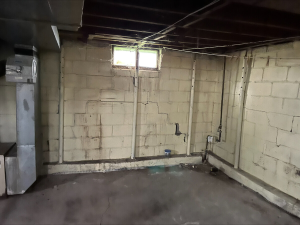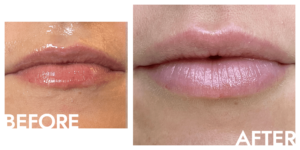Basement Repair Naperville IL is essential for preserving the integrity and value of residential property. Addressing basement issues early will reduce the risk of structural damage, musty odors, and mold growth.
Foundation cracks and other problems often result from soil shifting or settlement. Proper drainage and grading will ensure the ground slopes away from the foundation.

Foundation cracks are a common occurrence in newer homes, and as long as they’re not too wide they usually don’t pose a serious structural problem. Especially if they’re found in the areas where basement walls meet the floor, they can be caused by the fact that the concrete of the wall and the concrete of the floor were poured and cured at different times and don’t bond completely. These types of cracks are relatively harmless and can be easily repaired by using a caulk designed to work on concrete.
Depending on where they appear, horizontal cracks can also be the result of soil pressure pushing against basement walls. When clay soils are very wet and expand, they can cause inward pressure on foundation walls. This kind of pressure can be relieved by allowing the soil to dry out. When this happens, the inward pressure will be reversed and the walls can move upwards again.
Another problem that can occur with a basement foundation is that it can shrink as it settles and this can cause cracking. This is especially true for concrete basements that have been exposed to harsh weather conditions, such as freezing and thawing cycles. When this happens, the cracks in a foundation may be more extensive and can affect the entire structure of the building.
If you notice stair-step cracks in your basement walls, it’s time to call for help. These cracks are usually found in block basement walls and look like steps forming across the mortar joints. This type of crack is most likely a sign that one area of the house is settling at a faster rate than the rest, and can lead to moisture related problems.
Diagonal cracks are a more serious issue and need to be addressed right away. These cracks will often show up in basement walls that have a combination of stair-step and vertical cracking, and indicate that the foundation is moving in multiple directions. This kind of movement can compromise the structural integrity of a home and require major repairs, such as the installation of a foundation pier system to support your foundation.
Leaking Basements
Leaking basements are a major problem because water that enters the home’s foundation can cause structural damage and lead to mold, mildew and unwanted insect or rodent infestation. It can also damage furniture, appliances, books and other items stored in the area. If left unchecked, infiltrating water can also eat away at concrete, causing foundation cracks and crumbling.
Identifying the source of basement leaks can be difficult, but signs of water entering the basement include stains on walls, ceiling or windows, water puddles on the floor, and brown staining on basement walls or ceiling called efflorescence. These stains are a result of a reaction between the soil and basement wall material, indicating that moisture is seeping through the surface of the walls.
The main cause of basement leaks is hydrostatic pressure. Hydrostatic pressure occurs when the weight of groundwater causes it to push against basement walls, which then force water through any openings or cracks. When this pressure becomes great enough, the brick or masonry in basement walls will fail, causing leaks and floods.
There are a number of ways to prevent or repair basement leaks. The best strategy is to take steps to reduce or eliminate the source of the basement water. This can be done by repairing basement floor cracks and installing interior basement waterproofing. It can also be accomplished by ensuring that yard grading slopes soil away from the foundation and by making sure gutters, downpipes and window wells are properly installed and functioning.
If water is entering a basement through floor or cove joint cracks, it’s important to have these cracked areas repaired as quickly as possible. A mixture of epoxy and latex cement can be used to fill hairline cracks, while mortar can be applied with a hand trowel to larger cracks. The key to preventing future cracking is to make sure that the mortar is pressed firmly into all parts of the cracked area.
If water is seeping through the basement cove or at the bottom of a basement wall, it may be necessary to install an interior drain tile system. This system consists of a network of perforated pipes that are embedded in washed gravel to improve drainage, and is wrapped with a sock of filtration fabric to keep the system clean and working properly. The pipe takes in ground water through its perforations and carries it to the sump pump pit for discharge.
Bowed or Leaning Walls
Bowed basement walls are a serious issue that should not be ignored, as it’s not uncommon for them to lead to foundation damage and even structural collapse. They can be caused by a variety of issues, but the most common cause is hydrostatic pressure. This occurs when the soil surrounding your home has more water than it can absorb, putting a tremendous amount of pressure against the foundation wall. This pressure can cause the wall to curve, eventually leading to cracks and disintegration.
Bowing walls may be repaired in several ways, but the most effective solution depends on the severity of your bowing and the structural conditions of your property. A helical tieback wall anchor system is recommended for walls that have bowed more than 2 inches, and is installed with a steel shaft with helix plates on the end inserted into the earth around your foundation. This shaft is then attached to the inside of your basement wall, transferring the stress to the ground and stopping inward movement and bottom stress.
Another option for repairing bowing walls is a force wall brace, which uses a brace that counters the external pressure that causes basement walls to bend. This can be used if a wall plate anchor system is not possible due to yard restrictions or other constraints. Finally, carbon fiber straps are a great option for walls that have bowed less than 2 inches, and can be used in conjunction with a wall plate or helical tieback system to maximize their effectiveness.
Like carbon fiber straps, a c-channel wall anchor system transfers the stress from the exterior of your basement wall to floor joists or footing, which then takes that weight off the walls. This can help keep your basement wall from bowing or leaning and reduce the risk of future damage to your foundation.
If you’re seeing signs of bowing or leaning walls in your basement, don’t hesitate to contact us for a free inspection. We’re happy to answer your questions and provide a cost-effective repair for your foundation. By catching these problems early, we can help you avoid more expensive repairs in the future.
Waterproofing
Waterproofing is a critical step in the restoration and maintenance of residential basements. It stops both liquid and vapor water from infiltrating concrete foundation walls due to hydrostatic pressure and capillary action. This is accomplished by installing waterproof membranes and drainage systems on the exterior of the basement walls. In addition, exterior waterproofing includes excavating and applying a sealant around the foundation to prevent moisture penetration.
A residential basement is more than just a living space; it is also a valuable storage area and utility room. However, these spaces can be prone to a variety of issues that must be addressed to protect the home and ensure its structural integrity. Water intrusion and moisture problems are common issues encountered in basements, and there are several repair methods that can address these problems effectively.
In many cases, it’s easy to recognize signs of water infiltration. For example, you may notice puddles of water in the basement or see wet spots on the walls and floors. You may also experience a musty, wet odor caused by mold and mildew that is thriving in the damp environment.
It’s important to take quick action when you notice signs of a wet basement. If left unaddressed, these issues can worsen over time, leading to costly and extensive damage. In some cases, addressing these issues is as simple as regrading the soil outside of your home to create a slope that drains away from the foundation. In other cases, the solution may require professional assessment and repair.
Cracks in basement walls can be a sign of a serious problem with the foundation. These cracks are typically filled and sealed using epoxy injection, polyurethane injection or hydraulic cement to stop water from infiltrating the basement. This method of repairing basement cracks is highly effective and offers structural stability for the foundation.
When it comes to bowed or leaning basement walls, carbon fiber reinforcement is a modern and effective repair method. Carbon fiber strips are bonded to the interior surface of the basement wall, providing stability and preventing further movement over time. Helical piers are also an option for severe bowing or leaning walls, involving steel shafts with helix plates that are driven into the ground to support and stabilize the foundation.








